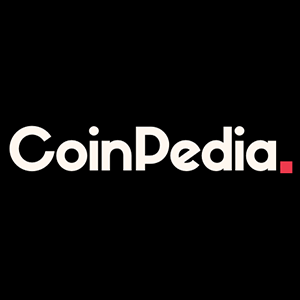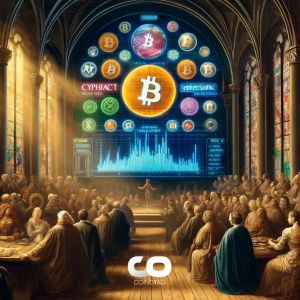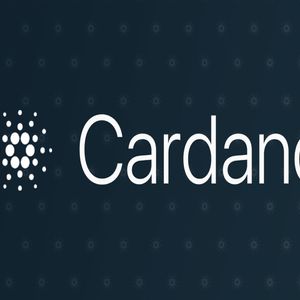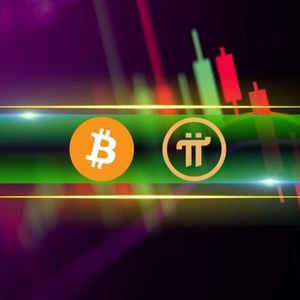BitcoinWorld South Korean STO: Unlocking the Future of Digital Assets with Bold Legislation The digital asset landscape is constantly shifting, presenting both unprecedented opportunities and complex regulatory challenges. In this dynamic environment, South Korea is taking decisive steps to cement its position as a leader in the global digital economy. A significant development on the horizon involves crucial legislative reviews concerning South Korean STO s and the introduction of a won-pegged stablecoin. This proactive approach, championed by lawmaker Min Byeong-dug, signals a powerful commitment to fostering a secure and innovative digital finance ecosystem. Understanding the Push for South Korean STO Legislation At the heart of South Korea’s ambitious digital asset agenda is the proposed digital asset basic act. This foundational legislation aims to provide a clear regulatory framework for the burgeoning crypto industry, ensuring stability and encouraging responsible innovation. Lawmaker Min Byeong-dug, a prominent figure from South Korea’s ruling Democratic Party, has been a vocal advocate for the swift passage of this act. His urgency stems from a recognition that the global financial landscape is rapidly being reshaped by digital assets, and South Korea cannot afford to lag behind. A key component of this legislative push involves Security Token Offerings (STOs). But what exactly are STOs, and why are they drawing so much attention? Essentially, STOs are digital representations of real-world assets, such as real estate, art, company shares, or intellectual property, that are issued and traded on a blockchain. Unlike traditional cryptocurrencies, STOs are typically backed by tangible assets and are subject to securities regulations, offering a bridge between traditional finance and the decentralized world of blockchain. For South Korea, embracing STOs could unlock immense potential: Increased Liquidity: STOs can transform illiquid assets into tradable digital tokens, making them more accessible to a broader range of investors. Fractional Ownership: High-value assets can be divided into smaller, affordable units, democratizing investment opportunities. Enhanced Transparency: Blockchain technology provides an immutable and transparent record of ownership and transactions. Global Reach: Digital tokens can be traded across borders more easily, attracting international investment. The push for comprehensive South Korean STO legislation is not just about adopting new technology; it’s about creating a robust, regulated environment where these innovations can thrive responsibly. Why a Won-Pegged Stablecoin Matters for the South Korean STO Market? Beyond STOs, lawmaker Min Byeong-dug has also emphasized the critical need for a Korean won-pegged stablecoin. Stablecoins are cryptocurrencies designed to minimize price volatility, typically by being pegged to a stable asset like a fiat currency (e.g., USD, EUR, or in this case, KPW). Min Byeong-dug vividly described stablecoins as “sweeping across the global payments market like a tsunami,” underscoring the urgency for South Korea to develop its own robust solution. The introduction of a won-pegged stablecoin would serve several vital functions for South Korea’s digital economy, especially in conjunction with the evolving South Korean STO landscape: Transaction Stability: It provides a reliable medium of exchange for digital asset transactions, removing the volatility associated with unpegged cryptocurrencies. This stability is crucial for businesses and investors engaging with STOs. Seamless Integration: A stablecoin pegged to the national currency can bridge the gap between traditional financial systems and the digital asset market, facilitating smoother conversions and settlements. Enhanced Trust: A government-backed or regulated won-pegged stablecoin would instill greater confidence among businesses and consumers, encouraging broader adoption of digital payments and investments. Global Competitiveness: By having its own national stablecoin, South Korea can maintain sovereignty over its digital financial infrastructure and compete effectively in the global digital payments arena. Imagine a scenario where investors can easily convert their Korean won into a stable digital asset to invest in a South Korean STO representing a fractional share of a high-value property, all within a regulated framework. This is the vision that Min Byeong-dug and his colleagues are working towards. The August Review: What to Expect for South Korean STO Bills? The legislative process is often intricate, but the announcement of an August review date brings a tangible timeline to these significant developments. Min Byeong-dug specifically stated that legislation related to security token offerings (STOs) will undergo review by the National Assembly’s National Policy Committee in August. Furthermore, a subcommittee will be convened in the same month to begin processing these STO bills. What does this mean for the future of South Korean STO s and digital assets? Intensified Scrutiny: The National Policy Committee is a crucial body responsible for financial and economic policy. Their review signifies a serious and detailed examination of the proposed STO framework. Potential for Amendments: During the review process, bills are often debated, refined, and amended based on feedback from various stakeholders, including industry experts, legal professionals, and public representatives. Pathway to Passage: The convening of a subcommittee indicates a move towards the active drafting and finalization of the legislation. This is a critical step before bills can be brought to a full vote in the National Assembly. Increased Clarity: Regardless of the final form, the review process itself will likely provide more clarity on the government’s stance and intentions regarding digital asset regulation, which is vital for market participants. This August timeline is a strong signal that South Korea is not just contemplating digital asset regulation but is actively moving towards its implementation. The focus on STOs and stablecoins suggests a strategic approach to integrate blockchain technology into the mainstream financial system, prioritizing regulated innovation. Navigating the Future: Challenges and Opportunities for South Korean STO While the prospects for a robust South Korean STO market are exciting, it’s important to acknowledge both the opportunities and the potential challenges that lie ahead. Opportunities: Diversification of Investment Portfolios: STOs can offer investors access to asset classes previously inaccessible or highly illiquid, such as real estate, private equity, or luxury goods. Enhanced Capital Formation: Businesses, particularly SMEs, could find new avenues for fundraising by tokenizing assets and offering them to a broader investor base. Technological Advancement: The development and adoption of STO platforms will spur innovation in blockchain technology, smart contracts, and cybersecurity within the financial sector. Global Leadership: By establishing a clear and progressive regulatory framework, South Korea can position itself as a global leader in the regulated digital asset space, attracting international investment and talent. Challenges: Regulatory Harmonization: Ensuring that South Korean STO regulations align with international standards will be crucial to avoid market fragmentation and facilitate cross-border transactions. Investor Protection: Developing robust mechanisms to protect investors from fraud, market manipulation, and technological risks associated with digital assets is paramount. Market Adoption: Educating the public and financial institutions about the benefits and risks of STOs will be essential for widespread adoption. Technological Infrastructure: Ensuring that the underlying blockchain infrastructure and cybersecurity measures are robust enough to handle large-scale STO issuance and trading. Taxation and Accounting: Clear guidelines on how STOs are taxed and accounted for will be necessary for businesses and investors. Successfully navigating these challenges will require ongoing dialogue between regulators, industry participants, and technology experts. The August review is a critical step in initiating this dialogue and shaping the future trajectory of South Korean STO s. Actionable Insights for Investors and Innovators in South Korean STO For those looking to engage with the evolving digital asset landscape in South Korea, proactive preparation is key. Whether you are an individual investor, a financial institution, or a blockchain innovator, understanding the implications of these legislative developments is crucial. Stay Informed: Regularly follow updates from the National Assembly, financial regulators, and reputable news sources regarding the progress of the digital asset basic act and STO bills. Understand the Framework: Once the legislation is clearer, delve into the specifics of how STOs will be classified, issued, traded, and regulated. This will dictate investment strategies and operational models. Identify Opportunities: Begin researching potential asset classes that might be suitable for tokenization under the new framework. For investors, look for platforms and projects that adhere strictly to the upcoming regulations. Prepare for Compliance: Innovators and businesses planning to issue STOs should start preparing their internal processes and systems to meet the anticipated regulatory requirements, including KYC/AML (Know Your Customer/Anti-Money Laundering) and investor suitability checks. Engage with the Ecosystem: Participate in industry forums, seminars, and discussions to connect with other stakeholders and contribute to the development of a healthy South Korean STO market. The upcoming legislative review presents a significant inflection point for South Korea’s digital asset future. By being prepared and informed, stakeholders can effectively participate in and benefit from this exciting new chapter. In conclusion, the impending August review of South Korean STO bills and the push for a won-pegged stablecoin underscore South Korea’s determination to establish a comprehensive and secure framework for digital assets. Lawmaker Min Byeong-dug’s efforts highlight a proactive stance, recognizing the transformative potential of blockchain technology while prioritizing regulatory clarity and investor protection. This pivotal period promises to reshape South Korea’s financial landscape, fostering innovation and attracting global attention to its burgeoning digital asset ecosystem. Frequently Asked Questions (FAQs) Q1: What is a Security Token Offering (STO)? A1: An STO is a type of cryptocurrency offering where digital tokens representing ownership in real-world assets (like real estate, company shares, or art) are sold. Unlike traditional cryptocurrencies, STOs are typically regulated as securities, offering investor protection and compliance with financial laws. Q2: Why is South Korea focusing on STO legislation now? A2: South Korea recognizes the immense potential of STOs to unlock liquidity for illiquid assets, enable fractional ownership, and foster innovation in its financial sector. The current legislative push aims to provide a clear, regulated environment for these activities, ensuring investor safety and global competitiveness. Q3: What is a won-pegged stablecoin, and why is it important for South Korea? A3: A won-pegged stablecoin is a digital currency whose value is directly tied to the Korean won, minimizing price volatility. It’s crucial for South Korea to facilitate stable and seamless transactions within its digital asset market, enhance financial stability, and maintain control over its digital economy in the face of global stablecoin adoption. Q4: Who is Min Byeong-dug, and what is his role in these developments? A4: Min Byeong-dug is a lawmaker from South Korea’s ruling Democratic Party. He is a key proponent of the digital asset basic act and is actively urging the swift passage of legislation related to STOs and the establishment of a won-pegged stablecoin, highlighting the urgency for South Korea to adapt to global digital asset trends. Q5: When are the STO bills expected to be reviewed by the National Assembly? A5: Lawmaker Min Byeong-dug announced that legislation related to STOs will be reviewed by the National Assembly’s National Policy Committee in August. A subcommittee is also scheduled to convene in August to begin processing these bills. Q6: How will these regulations impact the average investor in South Korea? A6: For the average investor, these regulations are expected to bring greater clarity, security, and new investment opportunities. A regulated South Korean STO market could mean access to previously inaccessible asset classes with enhanced investor protections, while a won-pegged stablecoin could offer a stable and convenient way to engage with digital assets. Did you find this article insightful? Share it with your network to spread awareness about South Korea’s progressive steps in digital asset regulation! To learn more about the latest crypto market trends, explore our article on key developments shaping global digital asset adoption. This post South Korean STO: Unlocking the Future of Digital Assets with Bold Legislation first appeared on BitcoinWorld and is written by Editorial Team















